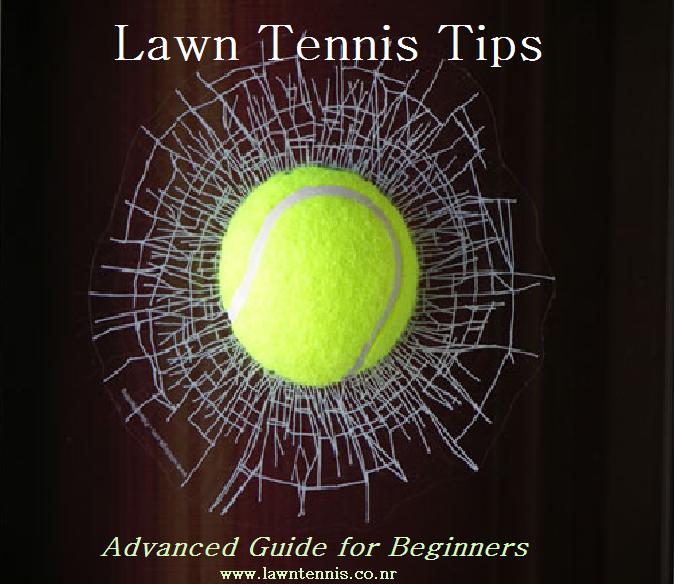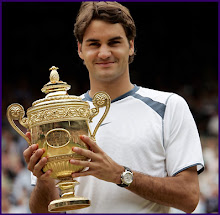By Nick Saviano
Photos By Lara Tomlin
 All the speed and spin in the world won’t matter if you can’t place the serve where you want it. The ability to control the direction of the serve is a critical component to its overall success. Hitting an ace is great. But not everybody can consistently crank the speed needed to blow a ball by an opponent. What’s more important is to set up the point tactically. The advantage of being the server is that it gives you a chance to dictate the point from the start. With good control you can choose to do things such as serve your opponent out wide or play to his weaker side. Here are some things to keep in mind if you want to have total control over your serve.
All the speed and spin in the world won’t matter if you can’t place the serve where you want it. The ability to control the direction of the serve is a critical component to its overall success. Hitting an ace is great. But not everybody can consistently crank the speed needed to blow a ball by an opponent. What’s more important is to set up the point tactically. The advantage of being the server is that it gives you a chance to dictate the point from the start. With good control you can choose to do things such as serve your opponent out wide or play to his weaker side. Here are some things to keep in mind if you want to have total control over your serve.
PAY ATTENTION TO YOUR FRONT FOOT
To manipulate the placement of your serve, you must first have control over your balance. Many players blame a bad toss for problems with their service accuracy, but I think you should look at the feet first. If your front foot is moving around to accommodate an errant toss, you’re going to hit from an unstable base. It’s fine to drag your back foot up during your service motion, but that front foot, apart from turning slightly to assist your upper-body rotation, should stay where it is.
 In fact, most of the time your toss should be in line with your front big toe, give or take an inch or two. If you can consistently put the toss in that location, you’ll have a better opportunity to control your serve. The big mistake players make is changing the toss to help hit to a target. Obviously, if you’re hitting a kick serve, the toss will have to move more behind your head, but on your basic power first serve the toss needs to be more in line with your front foot, no matter what direction you’re aiming the ball in.
In fact, most of the time your toss should be in line with your front big toe, give or take an inch or two. If you can consistently put the toss in that location, you’ll have a better opportunity to control your serve. The big mistake players make is changing the toss to help hit to a target. Obviously, if you’re hitting a kick serve, the toss will have to move more behind your head, but on your basic power first serve the toss needs to be more in line with your front foot, no matter what direction you’re aiming the ball in.
USE GOOD SHOULDER ROTATION
Not only does turning your shoulders add power to your shot, but it aids in accuracy as well. Too often recreational players simply face the net. This forces more of the power burden to fall on the serving arm, which can cause a loss of accuracy. The players who hit their locations most frequently generally have a healthy shoulder turn. This also provides good disguise during the preparation phase of the serve and will give your opponent trouble when he’s trying to read where you’re aiming.
PRACTICE HITTING TARGETS
There are three primary locations you are going to serve to—out wide, into your opponent’s body, and down the middle. While there are variations depending on the amount and type of spin you use, these are the crucial spots.
The best way to practice hitting these locations is to set up targets that cover a decent-sized area. Don’t limit yourself to a space the size of a tennis ball, because that’s unrealistic and would become too frustrating to try to hit. And avoid trying to crush the ball. Rather, focus on good rhythm, timing, toss, and location. Attempt to hit the same target no more than three to five times in a row. This will prevent you from altering your toss or service action in order to hit that spot. A fourth target to consider is a shorter angle on a wide slice serve. You can place it a couple of inches from the singles sideline and several feet up from the service line. This serve is great for pulling your opponent outside of the court and out of position.

MOVE THE RETURNER AROUND
There are two locations to be concerned with on the serve—the spot where the ball lands, and, perhaps more important, where the opponent makes his return. For example, say you’re a right-handed player trying to hit the ball down the T in the deuce court. If you hit a serve with some slice (which curves from right to left), the ball may land near the T, but it will curve toward your opponent. It may still be a good shot, but a flatter serve that lands in the same spot will stay farther away from your opponent and potentially be a more difficult return.
On the other hand, if you’re a righty and serving from the deuce side, that same slice serve placed out wide will curve away from your opponent more than a flat serve hit to the same location will. So you have to experiment with your serves and spins to figure out the spots you need to hit to stretch or jam your opponents. Depending on the flight path of your serve you may have to start the ball directly at the target or slightly to one side to achieve the desired effect. That’s why placement and spin are just as important as pace when it comes to the success of your serve.

PS : The shoes this girl is wearing in the pic is same as mine [:P]

